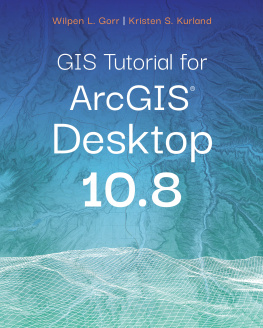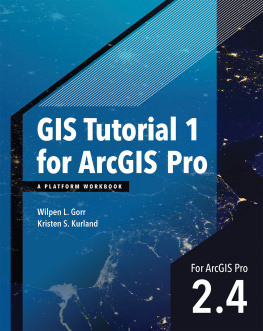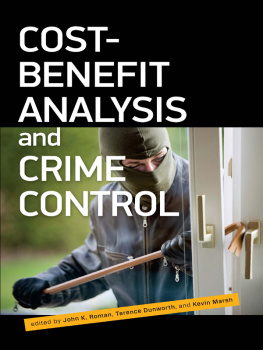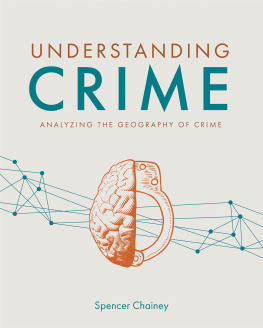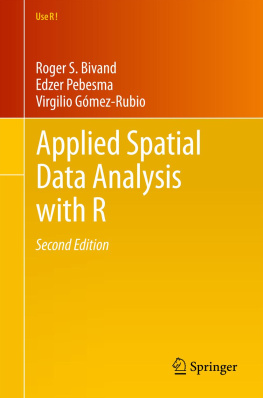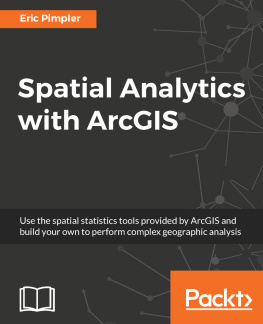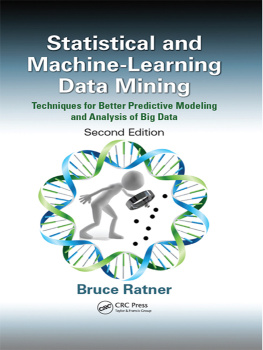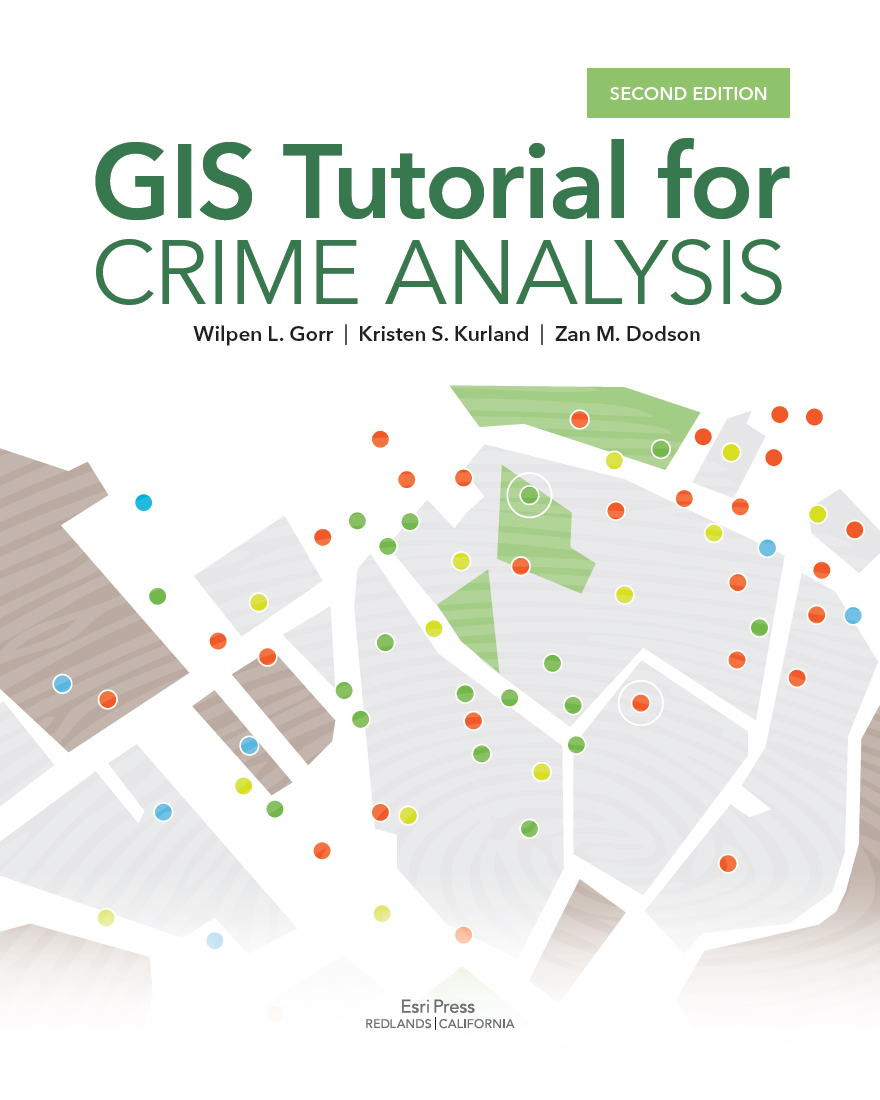
Esri Press, 380 New York Street, Redlands, California 92373-8100
Copyright 2018 Esri
All rights reserved. First edition 2012
e-ISBN 9781589485174
Library of Congress has cataloged the print edition as follows:
Names: Gorr, Wilpen L., author. | Kurland, Kristen Seamens, 1966- author. | Dodson, Zan M., author.
Title: GIS tutorial for crime analysis / Wilpen L. Gorr, Kristen S. Kurland, Zan M. Dodson.
Description: Redlands, California : Esri Press, [2018] | Earlier edition published: 2012.
Identifiers: LCCN 2017058415 | ISBN 9781589485167 (alk. paper)
Subjects: LCSH: Crime analysis--Data processing. | Geographic information systems. | ArcGIS. | Digital mapping.
Classification: LCC HV7936.C88 G675 2018 | DDC 363.250285--dc23
LC record available at https://lccn.loc.gov/2017058415
The information contained in this document is the exclusive property of Esri unless otherwise noted. This work is protected under United States copyright law and the copyright laws of the given countries of origin and applicable international laws, treaties, and/or conventions. No part of this work may be reproduced or transmitted in any form or by any means, electronic or mechanical, including photocopying or recording, or by any information storage or retrieval system, except as expressly permitted in writing by Esri. All requests should be sent to Attention: Contracts and Legal Services Manager, Esri, 380 New York Street, Redlands, California 92373-8100, USA.
The information contained in this document is subject to change without notice.
US Government Restricted/Limited Rights: Any software, documentation, and/or data delivered hereunder is subject to the terms of the License Agreement. The commercial license rights in the License Agreement strictly govern Licensees use, reproduction, or disclosure of the software, data, and documentation. In no event shall the US Government acquire greater than RESTRICTED/LIMITED RIGHTS. At a minimum, use, duplication, or disclosure by the US Government is subject to restrictions as set forth in FAR 52.227-14 Alternates I, II, and III (DEC 2007); FAR 52.227-19(b) (DEC 2007) and/or FAR 12.211/12.212 (Commercial Technical Data/Computer Software); and DFARS 252.227-7015 (DEC 2011) (Technical Data Commercial Items) and/or DFARS 227.7202 (Commercial Computer Software and Commercial Computer Software Documentation), as applicable. Contractor/Manufacturer is Esri, 380 New York Street, Redlands, CA 92373-8100, USA.
, GIS for Everyone, JTX, MapIt, Maplex, MapObjects, MapStudio, ModelBuilder, MOLE, MPSAtlas, PLTS, Rent-a-Tech, SDE, SML, SourcebookAmerica, SpatiaLABS, Spatial Database Engine, StreetMap, Tapestry, the ARC/INFO logo, the ArcGIS Explorer logo, the ArcGIS logo, the ArcPad logo, the Esri globe logo, the Esri Press logo, The Geographic Advantage, The Geographic Approach, the GIS Day logo, the MapIt logo, The Worlds Leading Desktop GIS, Water Writes, and Your Personal Geographic Information System are trademarks, service marks, or registered marks of Esri in the United States, the European Community, or certain other jurisdictions. CityEngine is a registered trademark of Procedural AG and is distributed under license by Esri. Other companies and products or services mentioned herein may be trademarks, service marks, or registered marks of their respective mark owners.
Ask for Esri Press titles at your local bookstore or order by calling 800-447-9778, or shop online at esri.com/esripress . Outside the United States, contact your local Esri distributor or shop online at eurospanbookstore.com/esri .
Esri Press titles are distributed to the trade by the following:
In North America:
Ingram Publisher Services
Toll-free telephone: 800-648-3104
Toll-free fax: 800-838-1149
E-mail:
In the United Kingdom, Europe, Middle East and Africa, Asia, and Australia:
Eurospan Group
3 Henrietta Street
London WC2E 8LU
United Kingdom
Telephone: 44(0) 1767 604972
Fax: 44(0) 1767 601640
E-mail:
158585
Contents
Assignment 4-2 Build auto squad choropleth maps
Documentation
Preface
The second edition of GIS Tutorial for Crime Analysis teaches ArcGIS Desktop software for crime mapping and analysis in modern police organizations. have brief introductions to underlying GIS and crime analysis followed by extensive step-by-step tutorials.
Besides brief introductions and tutorials, the book has Your Turn assignments within chapters, longer assignments at the end of chapters, and a book project at the end of offers a capstone learning experience in which youll build and size a crime hot spot program for available police resources for predictive accuracy and fairness (equity) of the spatial distribution of crime prevention services. You can configure the project from relatively short and focused to long and comprehensive, depending on the data source used (provided with this book or obtained externally). From teaching experience, weve found that students feel confident about gainfully using GIS in their careers once they complete a GIS project.
A theme of the book is that youll need to learn how to build, maintain, and use a crime mapping and analysis system to meet the daily information needs of a police organization and its many user groups. Youll learn how to handle a constant flow of police reports from the field into the system; perform spatial processing of the data using GIS for use in producing outputs of the system; and automatically produce the maps and analyses routinely needed by field officers, investigators, police executives, and the public. Youll also learn how to do one-time (ad hoc) crime analyses for certain crime problems as they arise.


